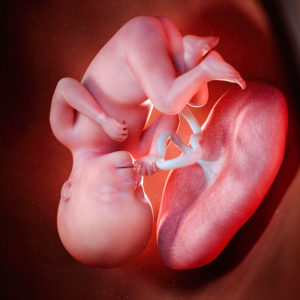What is Placenta Accreta?
 According to the American Pregnancy Association, approximately 1 in 2,500 pregnancies experience placenta accreta, increta or percreta. Placenta accrete is a potentially dangerous pregnancy complication in which the placenta grows too deeply into the uterine wall. In the highest risk cases, the placenta grows into the uterine muscles, a condition that is known as placenta increta, or through the uterine wall, known as placenta percreta. Instead of detaching from the uterine wall after childbirth as is typical, in cases of placenta accreta, part or all of the placenta remains attached, which can cause severe blood loss.
According to the American Pregnancy Association, approximately 1 in 2,500 pregnancies experience placenta accreta, increta or percreta. Placenta accrete is a potentially dangerous pregnancy complication in which the placenta grows too deeply into the uterine wall. In the highest risk cases, the placenta grows into the uterine muscles, a condition that is known as placenta increta, or through the uterine wall, known as placenta percreta. Instead of detaching from the uterine wall after childbirth as is typical, in cases of placenta accreta, part or all of the placenta remains attached, which can cause severe blood loss.
The most significant risk factor for placenta accreta is one or more previous cesarean sections (C-sections). According to research by the National Accreta Foundation, 87.6 percent of women have had a repeat C-section, increasing their risk for developing this dangerous complication. If you have had a past C-section and are trying for baby number two (three, four, or more), familiarize yourself with the causes and risks of placenta accreta.
Placenta Accreta Risk Factors
Women with the following factors may be at a higher risk of developing placenta accreta:
- A prior uterine surgery or multiple surgeries that have left scar tissue.
- Multiple past pregnancies, especially if delivered via C-section.
- A placenta that develops lower in the uterus or that wholly or partially covers the cervix (known as placenta previa).
- Age 35 or older.
Symptoms of Placenta Accreta
Before birth, placenta accreta often causes no symptoms, other than in some cases, vaginal bleeding during the third trimester. As a result, the diagnosis, and its potential risks, often come as a surprise to inflicted women. During childbirth, however, placenta accreta may cause:
- Heavy vaginal hemorrhaging post-delivery that could be life-threatening that is caused by disseminated intravascular coagulopathy, a condition that affects the blood’s ability to clot.
- Adult respiratory distress syndrome (lung failure).
- Kidney failure that requires a blood transfusion.
- Premature birth.
Diagnosis and Treatment Options for Placenta Accreta
A doctor can sometimes detect and diagnose placenta accreta during an ultrasound. If diagnosed during your pregnancy, your OBGYN may prescribe a cesarean section delivery followed by a surgical procedure to remove the entire uterus (a hysterectomy).
For More Information
For more information on placenta accreta, or to better understand your risk factors and delivery options, talk to your OBGYN. He or she can help you understand your options to put you and your baby in the best position for a healthy birth.
More